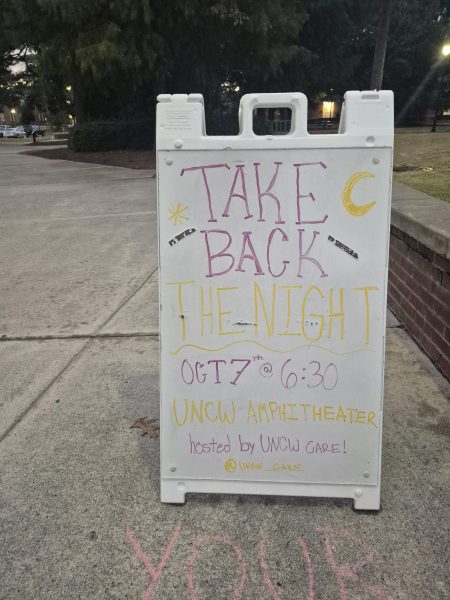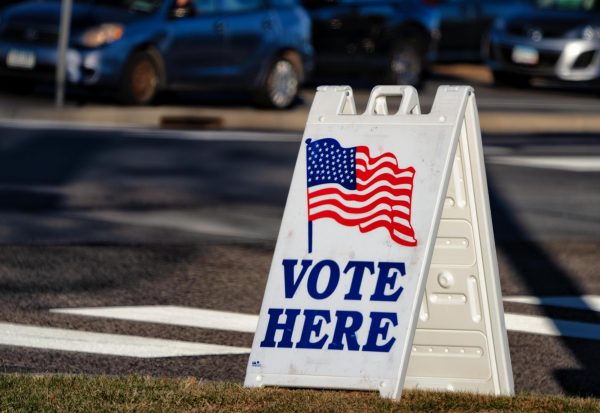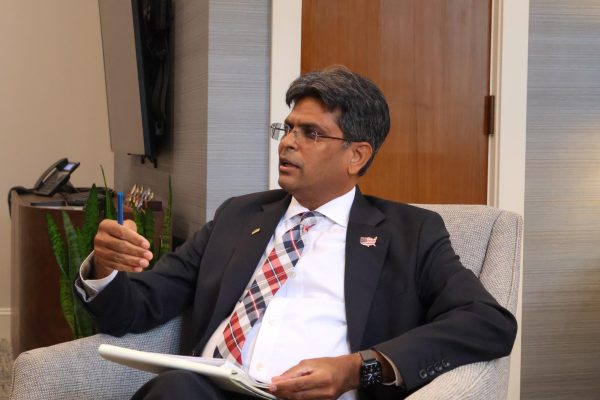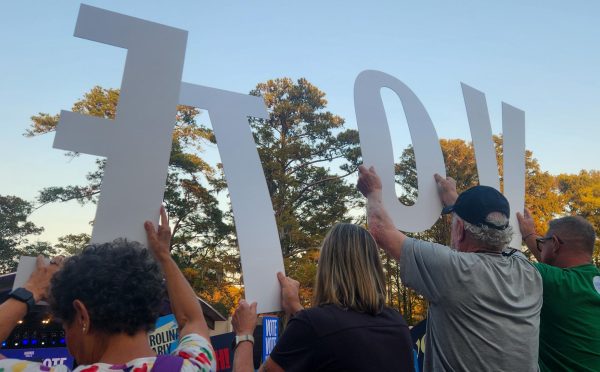Wilmington community participates in Global Week for Future demonstrations
Along with millions of protesters across the world who poured out into their cities and streets for the Global Week for Future protests, UNC Wilmington and the Wilmington community alike marched, fought, sang and stood in solidarity with both the environment and the international pursuit of climate justice.
Between Sept. 20 and 27, the Port City took part in events and demonstrations all over New Hanover County that raised awareness for the climate crisis, while demanding environmental action from all levels of policymakers.
According to the World Meteorological Association (WMO), the global average temperature has increased by 1.1°C, along with sea level rise, ice loss and extreme weather, between 2015 to 2019. Remaining in the atmosphere and oceans for centuries, they also found a 20 percent growth rate in CO2 emissions. In a coastal city like Wilmington, we see climate change in the increasing frequency and intensity of hurricanes, spurred on by rising ocean temperatures, while atmospheric temperatures decrease between the poles.
Between the Amazon Rainforest remaining on fire, and policymakers around the world remaining complacent or obstructive in passing environmental regulations, the global cry for climate justice continues to echo louder and louder. The recent emergence of the FridaysforFuture movement, originally composed of youth around the world impassioned by the lack of action against climate change, is clear evidence of this. Growing to encompass all generations, they are demanding a massive reduction of climate emissions, an end to the age of fossil fuels and a just response to climate change centered on human rights, equity and justice.
This movement is responsible for the week-long protests around the world, officially dubbed the Global Week for Future. Overlapping with the United Nations climate action summit, FridaysforFuture put out an international call to action, to protest for climate justice. Raised above their heads these crowds hold signs depicting facts often denied, fire extinguishers, the earth ablaze from those who would ignore it, and demands for a clean future. Epitomized by Greta Thunberg’s speech at the aforementioned summit, over 150 countries and 7 million protestors of all demographics have answered the call, Wilmington included.
The week’s events have been mainly organized by 350 Wilmington, a climate activist group which works at a local level to help build the global grassroots to help solve the climate crisis and transition into a sustainable future. Started only in the fall of last year, they have given platform to hundreds of Wilmington residents concerned by the declining state of the environment. Noelle Powers and Lindsay Lake, co-founders of 350 Wilmington elaborate:
“We wanted to provide a space where people who care about these issues, but did not know how to show this, in the same way that we are seeing people do in protests happening currently all over the world,” explained Lake on the final day of the climate protests.
The UN climate action summit ended with many world leaders taking slow, incremental actions, in a stark contrast to the immense turnout to the climate protests occurring around the world. While some leaders, like Germany’s Prime Minister Angela Merkel proposed serious action to speed up transitions to clean power, most offered empty promises and a lack of concrete plans. The United States has been more direct in their lack of support, as the Trump administration intends to leave the 2015 Paris climate accord, and has rolled back a number of environmental regulations for emissions put into place by the Obama administration. While President Trump attended the summit, he had nothing to say.











